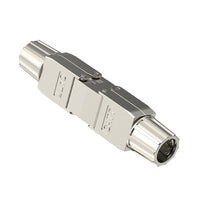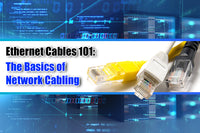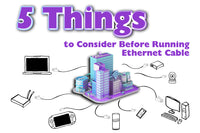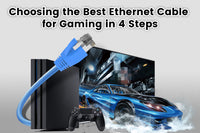Contents
A wired network connection is preferred by many people for its faster Internet speed, especially for those PC gamers who have higher requirements for low latency. In daily use, you often put one end of the Ethernet cable to the router and the other end to the users’ equipment. Sometimes your Ethernet cable may not work, what’s the issue and how to fix it? Here are some factors that will affect the performance of the Ethernet cable, and you can try to fix some problems.
Why is My Ethernet Not Working?
The first thing you need to know is that there are many possible reasons why your Ethernet cable cannot work. Here are three things that you should take into consideration:
- Is there any problem with your Ethernet cable?
- Check your network settings.
- Does your router or modem work well?
Remembering these three things will give you a good understanding of the wired network connection and help you quickly find the issue.

Easy Ways to Fix Network Connectivity Issues
There could be a lot of reasons for network connectivity issues, and we’ll not cover all troubleshooting solutions. We’ll dive into some common causes and solutions to fix network connections.
Check the Ethernet Cable and the Connection
-
Make sure your Ethernet cable is correctly terminated and completely plugged in.
Whether your Ethernet cables are terminated with RJ45 connectors, keystone jacks, or field termination, making them correctly wired is essential for a good connection. You can choose either T568A or T568B and always insist on the same wiring diagram. In addition, you should also use the correct RJ45 crimping tool or punch down tool. Otherwise the gold contacts cannot be contacted to the wire and cause a bad connection.

Another thing people often overlook is that the cable is not completely plugged in. Ensure your Ethernet cable is securely plugged into the router, computer, Xbox, or PlayStation port. -
Check the Ethernet cable category.
Is your Ethernet cable category compatible with your network equipment? There are various Ethernet cable categories including Cat5e, Cat6, Cat6a, Cat7, and Cat8. Take the Cat6 cable as an example, it can support 10 Gbps at a length of about 37-55 meters, and it has a slower speed if running over 100 meters.
-
Check for damaged Ethernet cables.
If your Ethernet cable cannot work or you check that your Ethernet cable has obvious damage, try a new one to see if it solves the problem. If it still cannot work, there could be an issue with your hardware.
Check the Network Equipment
-
Try other Ethernet ports.
A router often comes with different Ethernet ports (also known as LAN ports). Use the second one if you can’t establish an Ethernet connection with the first LAN port. If it still doesn’t work, your router might have an issue, and you should check if your router setup is correct.
-
Restart your router or modem.
Restarting your router sometimes helps as it allows for a new connection with the Internet service provider and resets the connection between your router and your device. The connection issues can often be solved after restarting your router. Unplug the Ethernet cable from the router and your device and wait for at least 30 seconds. Then put the router back and turn it on.
Check for Network Setting
-
Update your computer drivers or router’s firmware.
Your network connection can also be affected by your software. Your computer may update drivers automatically, but you should also pay attention to it. An up-to-date computer diver can make your device secure and help fix bugs. -
Diagnose the problem on your computer.
Both Windows and Mac have the function of network troubleshooting. For Windows, click the setting and then choose Network&Internet. And then, select Troubleshoot under Network Settings. For Mac, when your Mac starts, hold the Option and D key to trigger Apple Diagnostics.
Other Factors That May Affect Your Network Connection
- Electromagnetic Interference: If you’re establishing a wired connection in a place full of Electromagnetic interference, you may find your wired network speed even slower than WiFi. If you’re using an unshielded cable nearby a high EMI environment, you may need to replace it with a shielded one. And you should pair the shielded Ethernet cable with shielded RJ45 connectors or other accessories. By the way, the termination of shielded Ethernet cables can be difficult for novices.
- Too many RJ45 couplers: Though many professionals don’t recommend using RJ45 couplers, sometimes they work in permanent structured cable. Remember not to use too many Ethernet couplers, or it will affect your network connection.
- Too long cable running: Cable length is essential for good cable performance. It is known that the general maximum distance of an Ethernet cable is 328 feet. But in fact, it will be affected by many exterior influences, especially for outdoor installations.
- Cable bending: Different categories of Ethernet cables have their bend radius. An Ethernet cable with a tight bent can damage copper wires inside and finally cause a not working cable.
Final Thoughts
It can be a headache problem if your Ethernet cable cannot work, but you can follow the above steps to find and solve your network problems. Check the Ethernet cable itself and network equipment. We hope this post can help you, and we’re willing to know your knowledge about network troubleshooting.
For more information on this topic, you can keep up on our blogs. While VCELINK offers general and basic information for our customers and other visitors to the website, it’s not professional advice.






Be the first one to comment.
Leave a comment